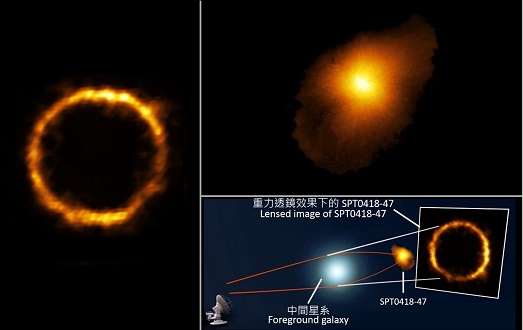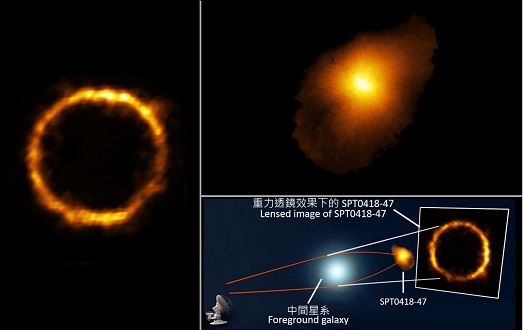Can you guess what the halo in the image on the left is? Would it be an image of an annular solar eclipse? In fact, it is a galaxy called "SPT0418-47". The light from this galaxy has taken more than 12 billion years to reach Earth. You may have a question in your mind: Why can astronomers see celestial bodies so far away?
When there is another galaxy situated between a distant galaxy and the Earth, the divergent light emitted from the distant galaxy will be bent by the gravity of the foreground galaxy and directed to the Earth, so that we can receive a stronger signal. This effect is called the "Gravitational Lensing". Since SPT0418-47, the Earth and the foreground galaxy are almost aligned, SPT0418-47 appears as a near-perfect ring of light after being converged by the gravitational lensing. Astronomers used computer modelling to reconstruct its original appearance as shown in the top right image.
This study allows astronomers to acquire the information of the oldest galaxies in the Universe, and provides new clues to understand the evolution of galaxies as well as the Universe.




